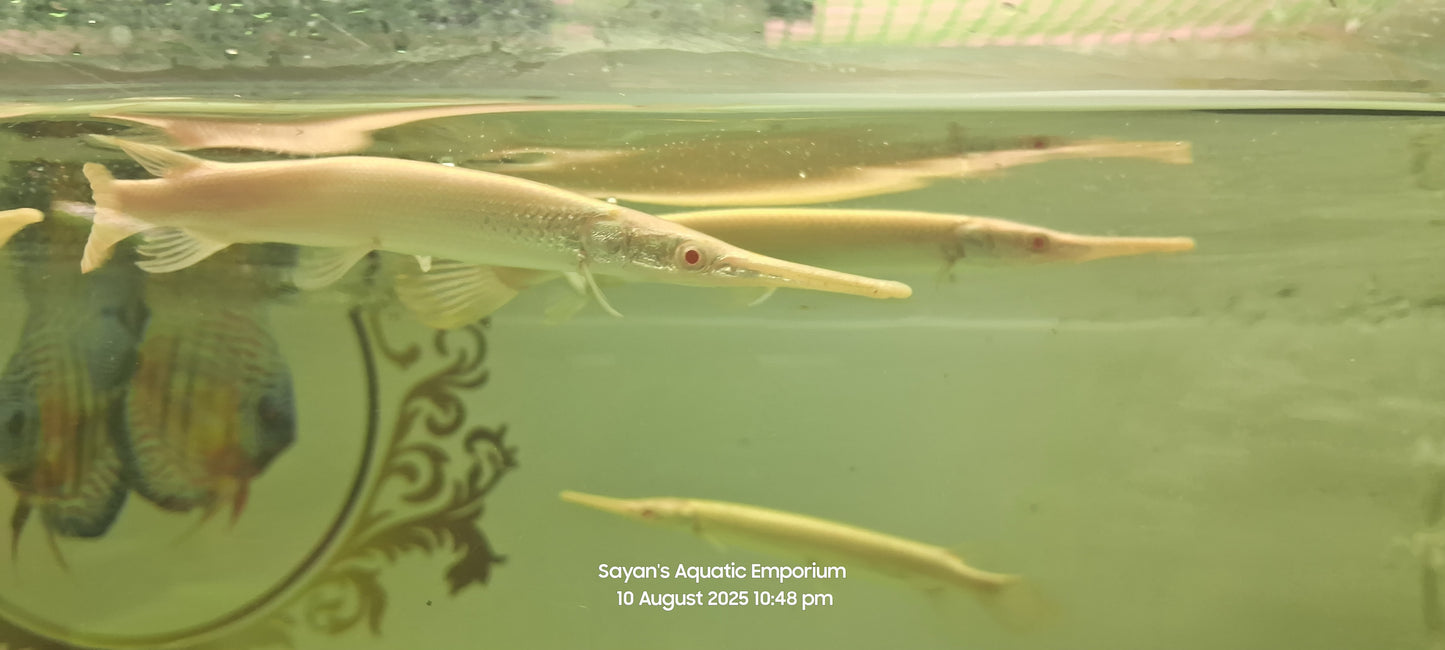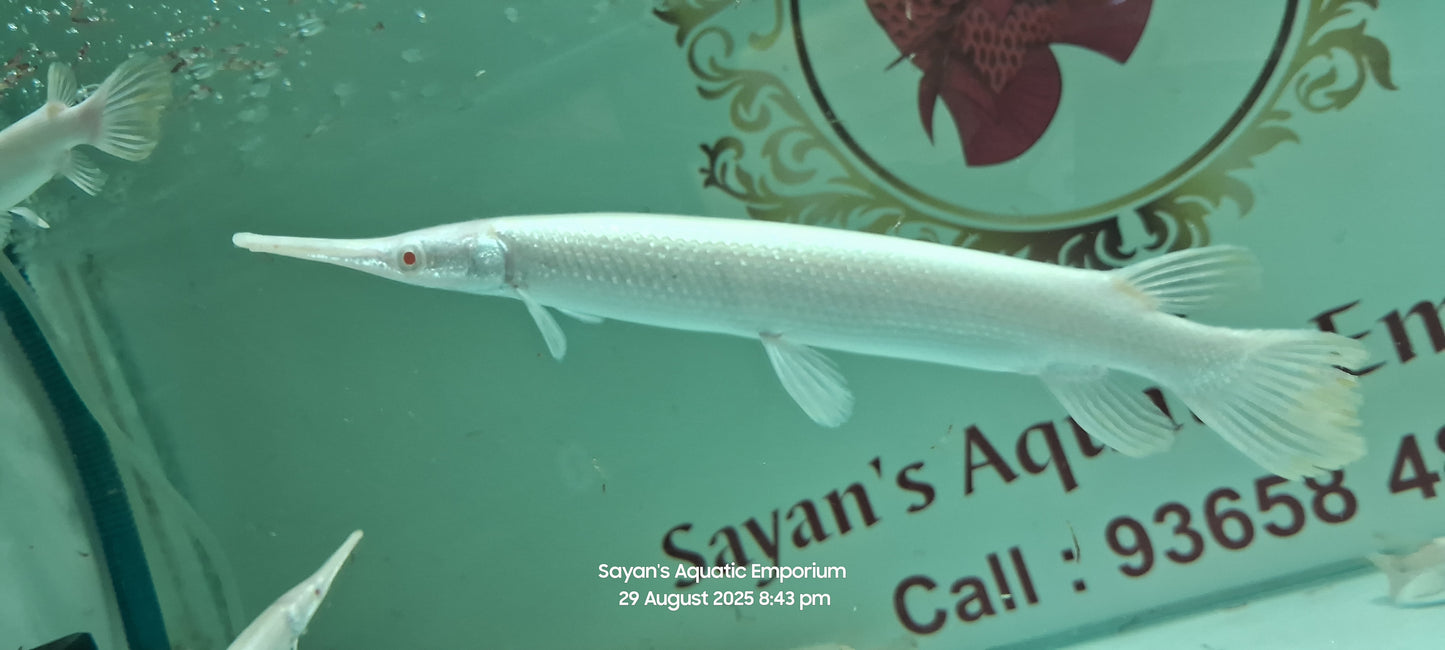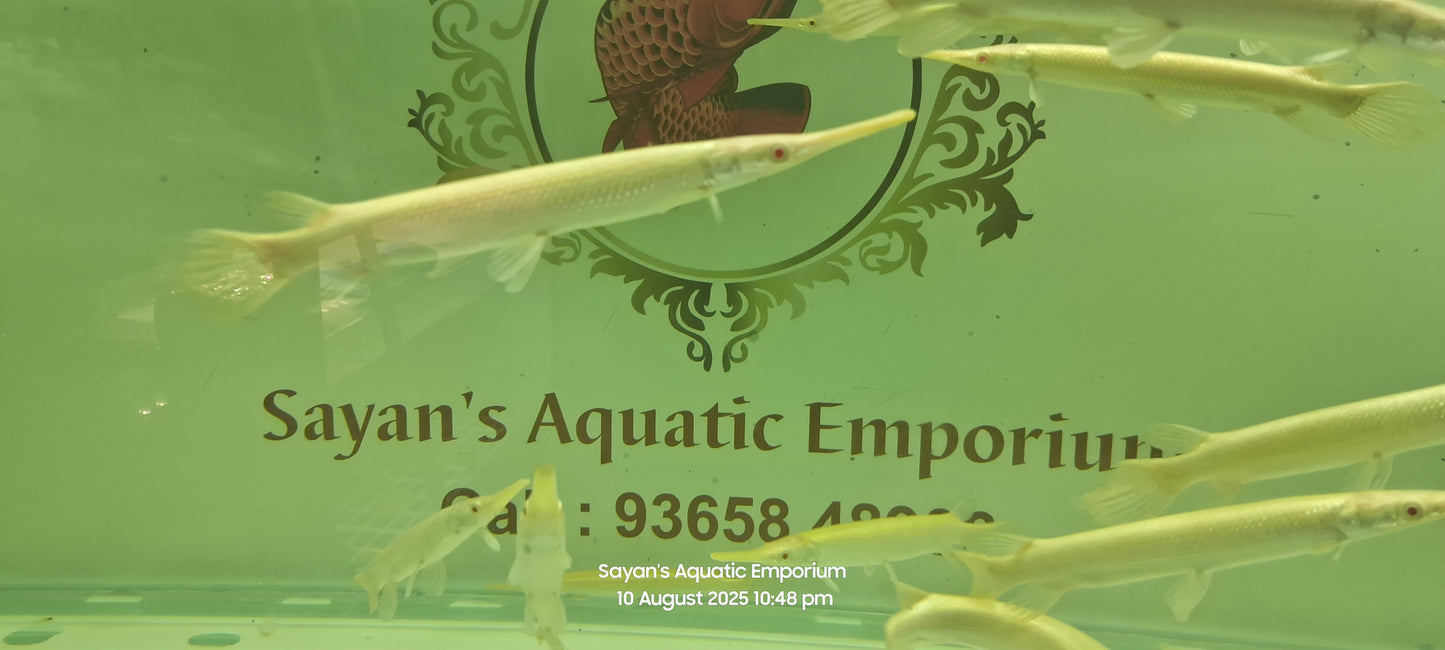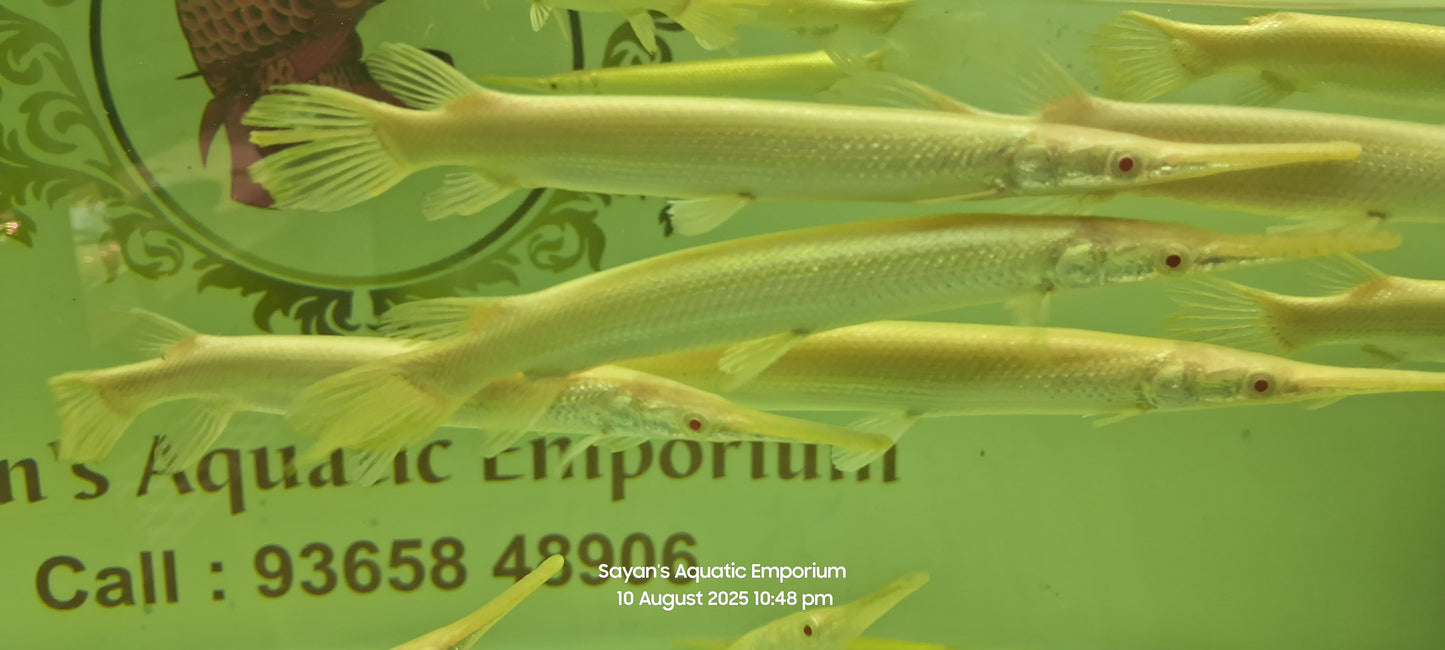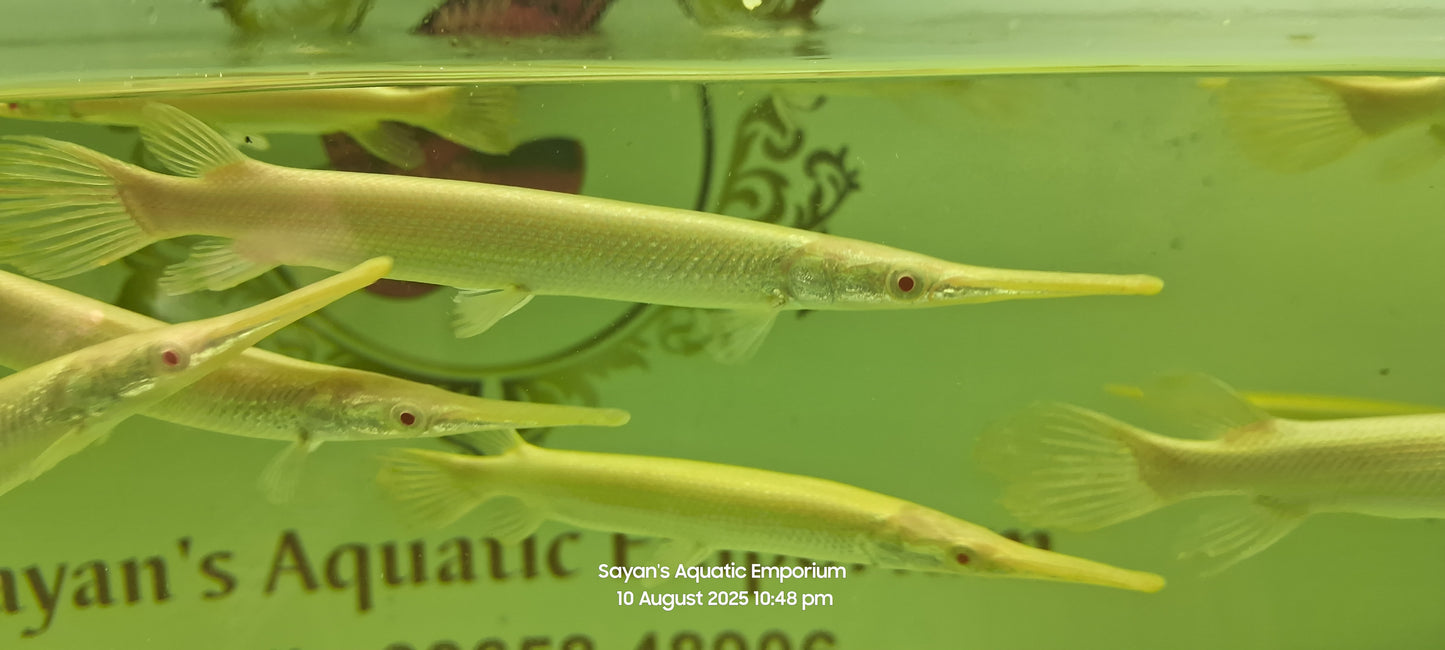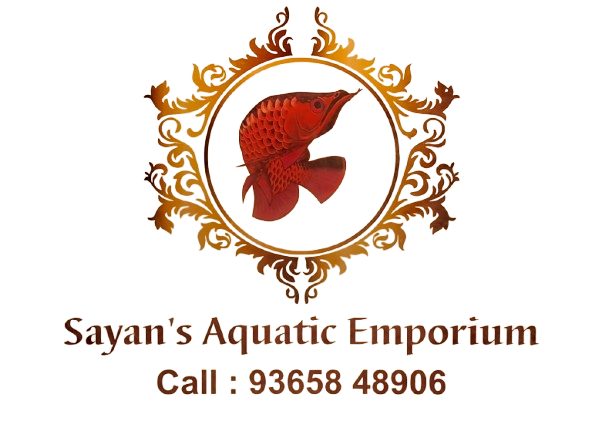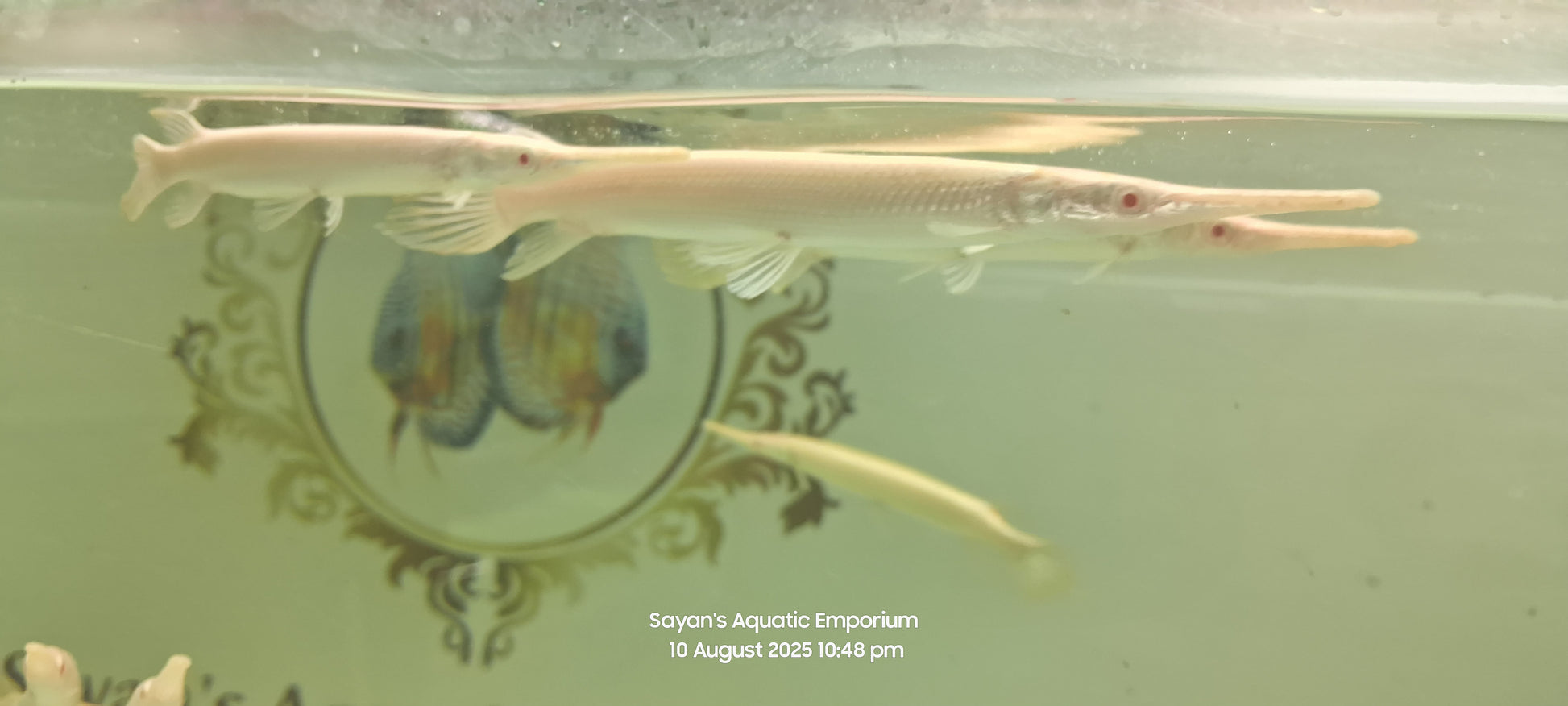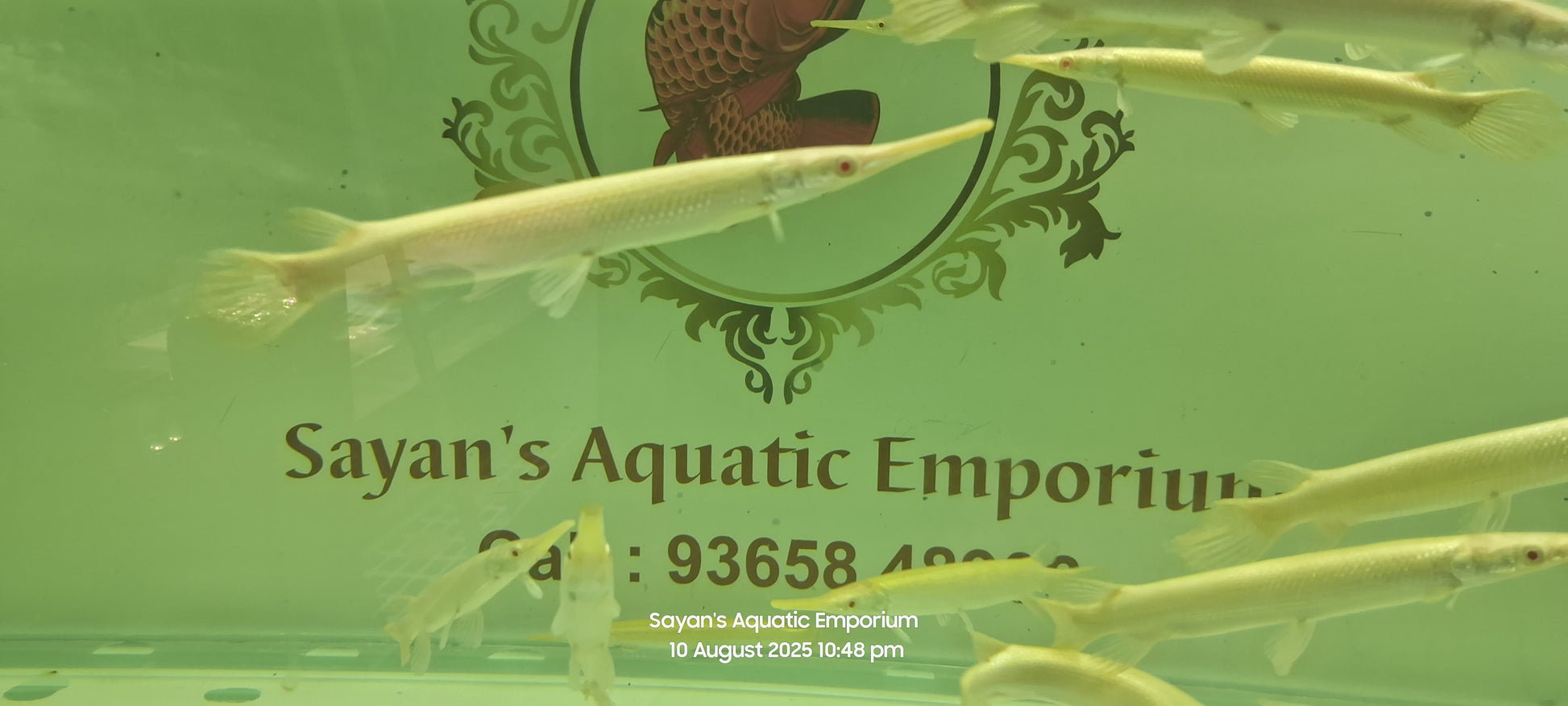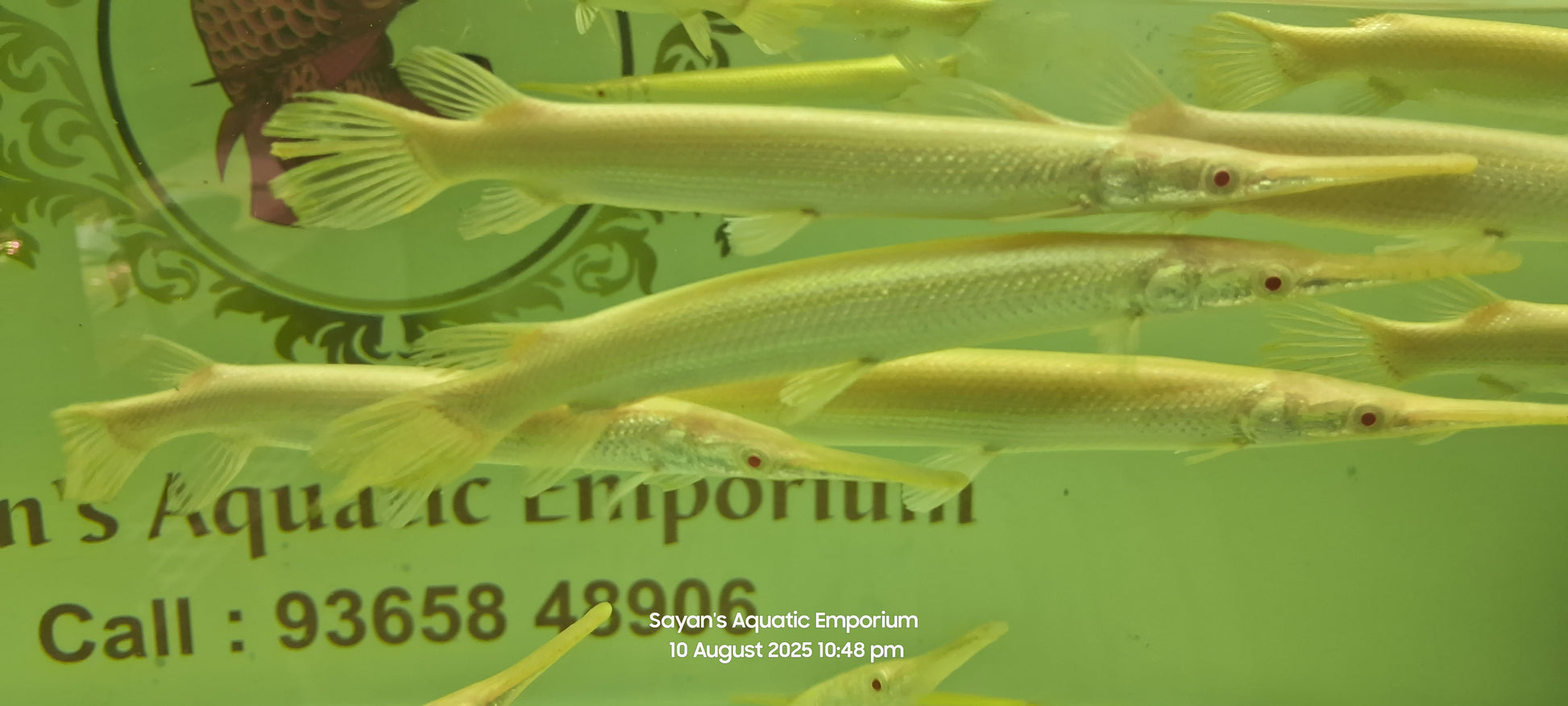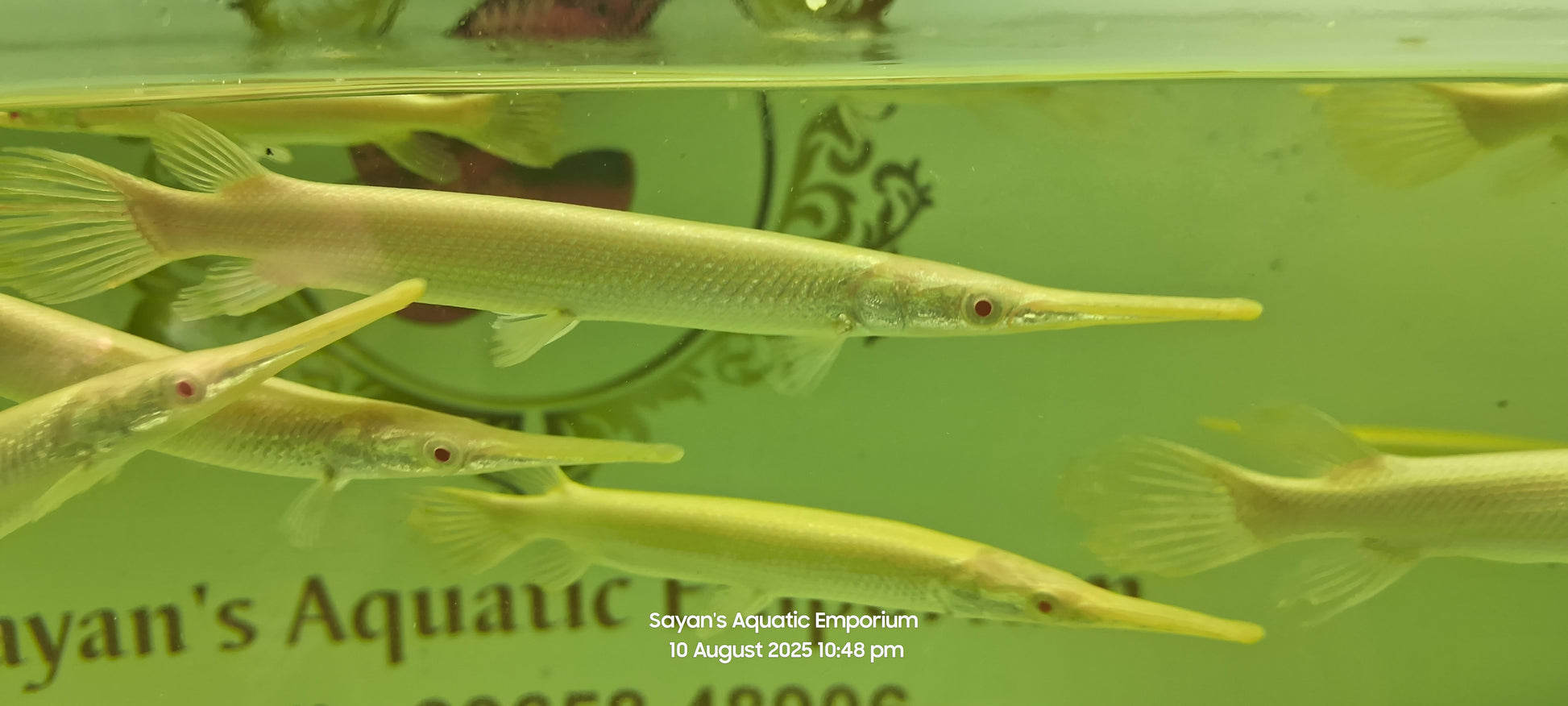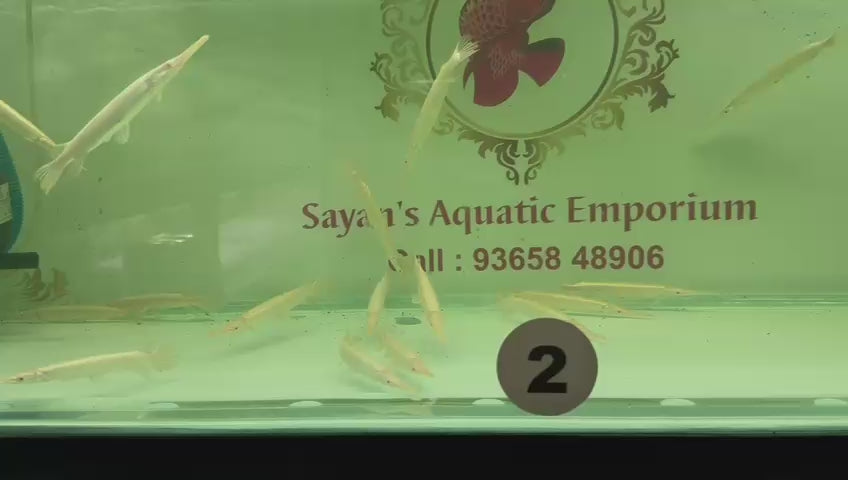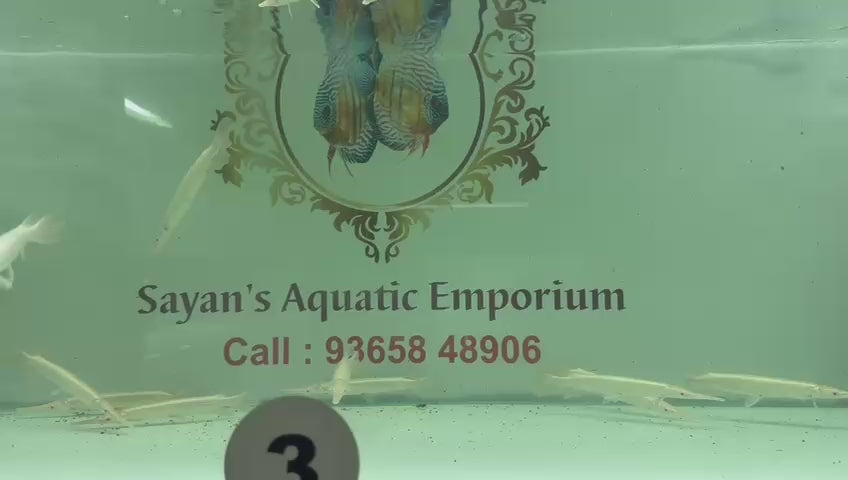SAYAN'S AQUATIC EMPORIUM
Albino Florida Gar
Albino Florida Gar
Couldn't load pickup availability
Albino Florida gar are a rare color variation of the Florida gar (Lepisosteus platyrhincus), characterized by a pale, yellowish or white body and distinctive red eyes. They are a predatory species native to the southeastern United States, known for their elongated bodies and needle-like teeth, making them effective hunters of smaller fish. These fish are popular in the aquarium trade due to their unique appearance, but they require large tanks and careful management due to their predatory nature and size.
Here's a more detailed look:
Appearance:
Albino Florida gar have a pale, almost translucent, body color, sometimes with a yellowish or golden tint.
Their eyes are a striking red color.
They have a long, slender body with a pointed snout and sharp teeth, typical of the Florida gar species.
Habitat and Behavior:
They are freshwater fish native to the southeastern United States, including Florida.
In the wild, they inhabit slow-moving waters like rivers, streams, and swamps.
Albino Florida gar are primarily piscivorous, meaning they primarily eat fish, but they are opportunistic and may also eat other small aquatic animals.
They are known to be relatively passive and solitary, but they are also ambush predators.
They are often found near the bottom of the tank or in areas with hiding places.
Aquarium Care:
Albino Florida gar require large aquariums to accommodate their size and swimming needs.
A minimum of a 75-gallon tank is recommended for juveniles, with larger tanks needed as they mature.
They need well-filtered water with plenty of hiding places and vegetation.
They are sensitive to water quality changes and require stable conditions.
Due to their predatory nature, they should be housed with similarly sized and non-aggressive fish.
They need a varied diet of fish, shrimp, and other meaty foods.
Share
